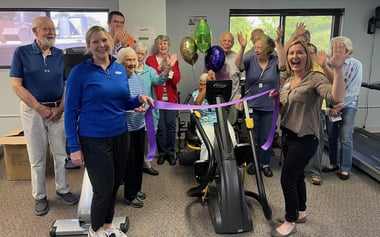 Westminster Village of Terre Haute was thrilled to participate in the first year of Pump it for Parkinson’s last year! My residents enjoyed the program, learning about the benefits of exercise for those fighting back against Parkinson’s Disease, as well as contributing to a nationwide goal of achieving one million steps along with thousands of other seniors in communities across the country. They also enjoyed the excitement of potentially winning a new NuStep T6 for our fitness center. Residents commented that even if we did not win the machine, at least we aided in the message regarding Parkinson’s Disease being delivered. Once the BIG Day came to an end and our community learned that we won the drawing for the grand prize, our entire community was thrilled and in shock! Now, let’s discuss three features that my residents have been LOVING about their new NuStep T6 recumbent trainer:
Westminster Village of Terre Haute was thrilled to participate in the first year of Pump it for Parkinson’s last year! My residents enjoyed the program, learning about the benefits of exercise for those fighting back against Parkinson’s Disease, as well as contributing to a nationwide goal of achieving one million steps along with thousands of other seniors in communities across the country. They also enjoyed the excitement of potentially winning a new NuStep T6 for our fitness center. Residents commented that even if we did not win the machine, at least we aided in the message regarding Parkinson’s Disease being delivered. Once the BIG Day came to an end and our community learned that we won the drawing for the grand prize, our entire community was thrilled and in shock! Now, let’s discuss three features that my residents have been LOVING about their new NuStep T6 recumbent trainer:
Seamless Setup – Numerous residents must only be instructed on how to utilize the NuStep T6 once. Residents enjoy the idea that they can sit within the machine and simply begin to move for the machine to respond to them beginning the activity. The fact that their personalized seat number setting is displayed on the screen allows residents to easily adjust as needed to fit their needs.
Walking Trails – Once residents are set and ready to go with their personalized settings, many utilize the touch screen to select the first dialogue box titled “Walking Trails”. This dialogue box is by far the most popular selection allowing participants to “travel” during exercise. Residents enjoy having me by their side as they travel through the various environments to discuss the architecture within each environment. Each trail supports users in making physical activity more engaging and less monotonous through their work out!
Workout Summary – At the completion of each workout session, the machine displays all the hard work completed for review. Residents are keen to share their workout summaries with me as they complete their workout and ask questions regarding parameters that are tracked that they may not be familiar with. This feature is a great segway into explaining the purpose of exercise utilizing the NuStep T6 while the residents learn something new regarding their physical activity capabilities and progression. I have had a few residents track their workout summaries within their personal journals so they can track their progress and share it with me on a weekly basis.
I highly recommend the NuStep T6 for senior living fitness centers both from the satisfaction in which I see my residents enjoying it as well as my vantage point as a degreed fitness professional and the motivation and engagement I see it supporting my participants in being physically active.
Which of the three categories do you think the residents within your community would enjoy the most? We are pumped to contribute our steps this World Parkinson’s Day on our new NuStep T6!
Follow us at Pump it for Parkinson's on Facebook as we strive for 10,000,000 steps to represent the 10,000,000 people worldwide living with Parkinson's Disease on World Parkinson's Day, Thursday, April 11!

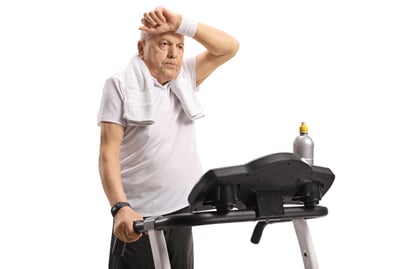 We've all been there – motivated to get fit, only to find ourselves struggling to maintain a consistent workout routine. It's a common hurdle, and the good news is that there are solutions to overcome these challenges. Let's explore four key reasons you might find it hard to stick with your workouts and how to conquer them.
We've all been there – motivated to get fit, only to find ourselves struggling to maintain a consistent workout routine. It's a common hurdle, and the good news is that there are solutions to overcome these challenges. Let's explore four key reasons you might find it hard to stick with your workouts and how to conquer them.
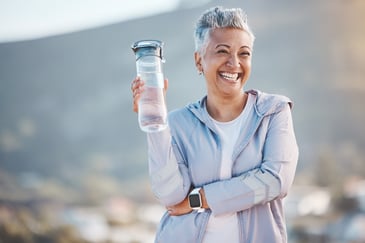 Beginning in the early stages of life, everyone is told to drink water, water, and more water. With everyone instructing individuals to consume more water, what are some methods to increase our water intake? Staying hydrated is vital for the human body to continue to perform activities that we wish to engage in. The human body is roughly fifty percent water, which may emphasize the instruction to consume more water even more than before. We are going to discuss three tips to increase the overall consumption of water so that everyone can reach their desired goals. I encourage you to implement one of the three tips and analyze whether your daily water intake increased. To determine that optimal amount of water your body may need daily, reach out to your primary physician for guidance.
Beginning in the early stages of life, everyone is told to drink water, water, and more water. With everyone instructing individuals to consume more water, what are some methods to increase our water intake? Staying hydrated is vital for the human body to continue to perform activities that we wish to engage in. The human body is roughly fifty percent water, which may emphasize the instruction to consume more water even more than before. We are going to discuss three tips to increase the overall consumption of water so that everyone can reach their desired goals. I encourage you to implement one of the three tips and analyze whether your daily water intake increased. To determine that optimal amount of water your body may need daily, reach out to your primary physician for guidance. Imagine a full exercise class, residents upbeat and ready to start, a packed schedule of personal training clients, or hallway conversations about how good the residents feel after exercising. I say imagine because during the cold months, these things aren’t always a reality.
Imagine a full exercise class, residents upbeat and ready to start, a packed schedule of personal training clients, or hallway conversations about how good the residents feel after exercising. I say imagine because during the cold months, these things aren’t always a reality..png?width=315&height=315&name=2024%20PUMP%20IT%20SOCIAL%20(6).png) The National Institute for Fitness and Sport (NIFS) has partnered with NuStep to host a free event on World Parkinson’s Day, Thursday, April 11, 2024, to raise awareness on the benefits of exercise for those fighting back against Parkinson’s. We have a big goal of achieving 10 million steps on the NuStep to honor the 10 million people living with Parkinson’s worldwide.
The National Institute for Fitness and Sport (NIFS) has partnered with NuStep to host a free event on World Parkinson’s Day, Thursday, April 11, 2024, to raise awareness on the benefits of exercise for those fighting back against Parkinson’s. We have a big goal of achieving 10 million steps on the NuStep to honor the 10 million people living with Parkinson’s worldwide.
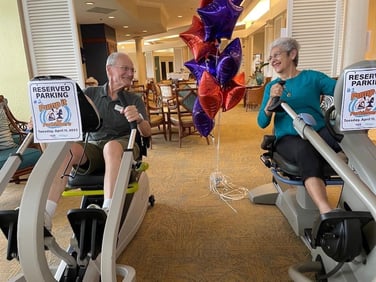 Last year, the only complaint we heard about Pump it for Parkinson’s was several communities heard about it too late and missed out on the fun!
Last year, the only complaint we heard about Pump it for Parkinson’s was several communities heard about it too late and missed out on the fun! 
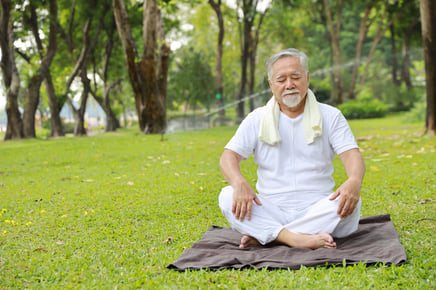 It has often been thought that core strength can only to be achieved through sit ups, crunches, and planks but in recent years there has been a lot more discussion about the way we breathe and how it effects our core. If you participate in 1-1 training or group fitness, you have probably heard your trainer tell you to breathe and brace your core through a particular exercise. What does it mean to effectively brace your core and why is it important? Is it to see your abdominals, provide you strength or to help with your posture? In all reality, we use our core for many daily tasks such as standing tall, getting up off a chair, or even walking. Learning how to brace your core is fundamental in creating a strong foundation for all movements and can also help to aide in injury prevention.
It has often been thought that core strength can only to be achieved through sit ups, crunches, and planks but in recent years there has been a lot more discussion about the way we breathe and how it effects our core. If you participate in 1-1 training or group fitness, you have probably heard your trainer tell you to breathe and brace your core through a particular exercise. What does it mean to effectively brace your core and why is it important? Is it to see your abdominals, provide you strength or to help with your posture? In all reality, we use our core for many daily tasks such as standing tall, getting up off a chair, or even walking. Learning how to brace your core is fundamental in creating a strong foundation for all movements and can also help to aide in injury prevention.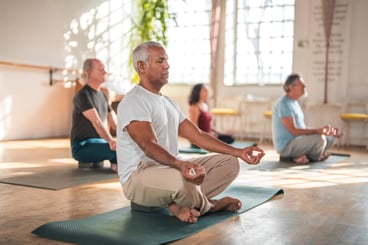 Acute and chronic pain is something almost everyone must deal with in their lifetime whether it is from an injury, overuse, or a degenerative condition such as arthritis. This consideration becomes much more common as exercisers move into the active aging portion of their fitness journey. Meditation in various forms has been shown to provide relief in both acute and chronic situations and in many cases may increase an exerciser’s overall pain tolerance. Techniques that correlate well with pain management are mindfulness meditation, body scans, visualization, guided meditation, and progressive muscle relaxation.
Acute and chronic pain is something almost everyone must deal with in their lifetime whether it is from an injury, overuse, or a degenerative condition such as arthritis. This consideration becomes much more common as exercisers move into the active aging portion of their fitness journey. Meditation in various forms has been shown to provide relief in both acute and chronic situations and in many cases may increase an exerciser’s overall pain tolerance. Techniques that correlate well with pain management are mindfulness meditation, body scans, visualization, guided meditation, and progressive muscle relaxation.
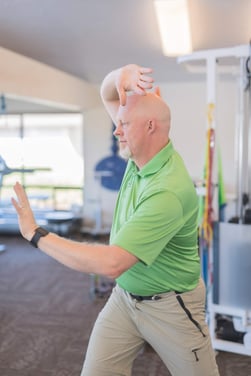 It’s not uncommon for people to describe uncomfortable physical sensations; musculoskeletal discomfort has become increasingly common. If you think about the average office worker, they will likely talk about pain in the neck, upper traps, and shoulders. Why these specific areas? When people are stressed, they have a tendency to hunch over and round the upper back. This tightens the aforementioned muscles, causing irritation. Trauma and chronic stress can have a lingering impact on our bodies; the body can unconsciously tense up, causing chronic pain.
It’s not uncommon for people to describe uncomfortable physical sensations; musculoskeletal discomfort has become increasingly common. If you think about the average office worker, they will likely talk about pain in the neck, upper traps, and shoulders. Why these specific areas? When people are stressed, they have a tendency to hunch over and round the upper back. This tightens the aforementioned muscles, causing irritation. Trauma and chronic stress can have a lingering impact on our bodies; the body can unconsciously tense up, causing chronic pain. 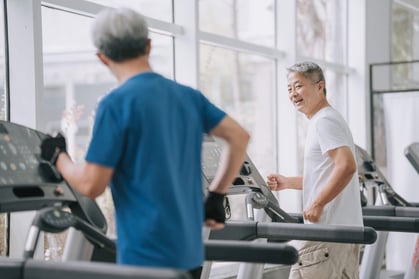 Congratulations! You’ve decided to get started with your fitness journey! Now what?
Congratulations! You’ve decided to get started with your fitness journey! Now what?